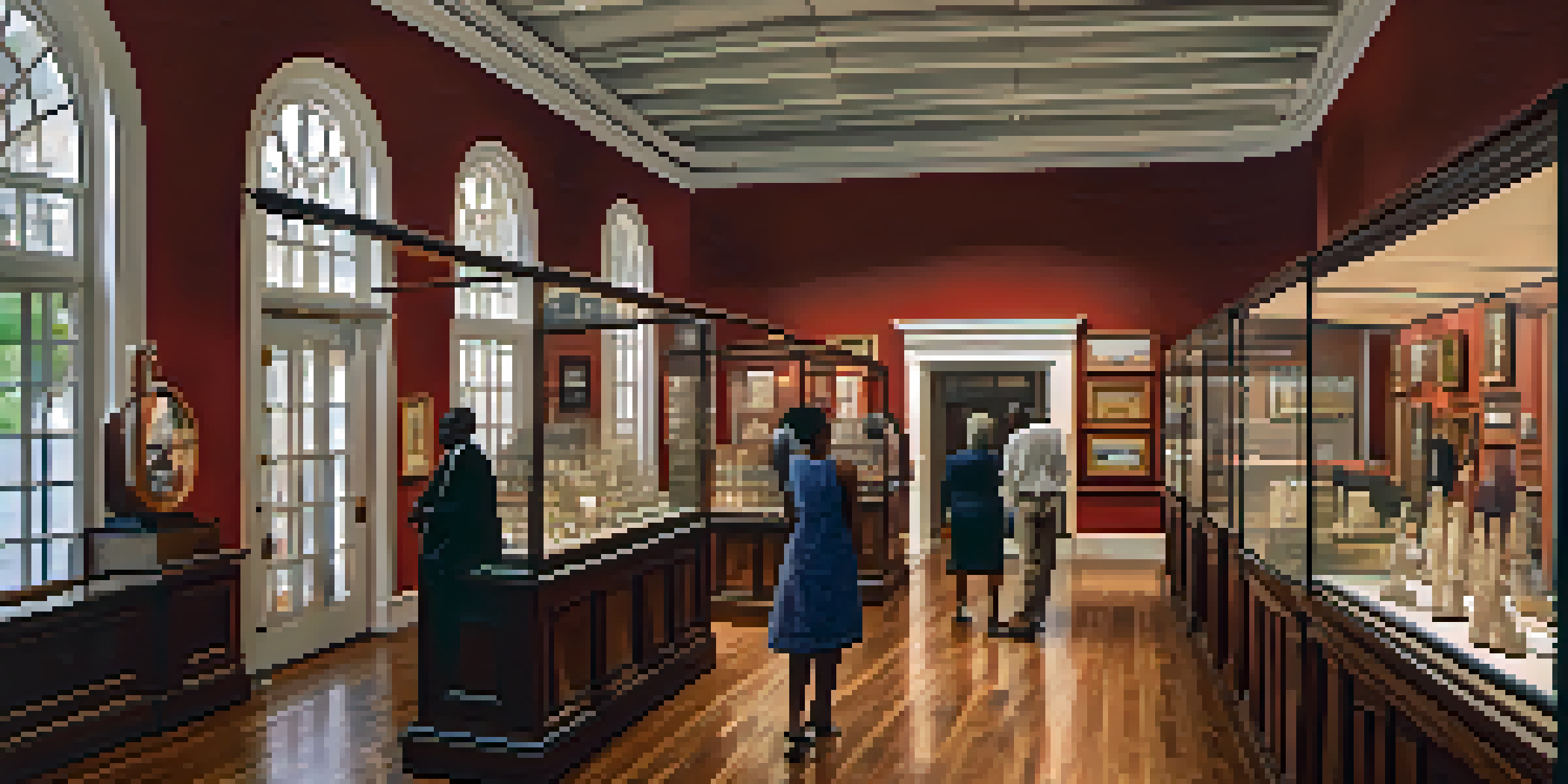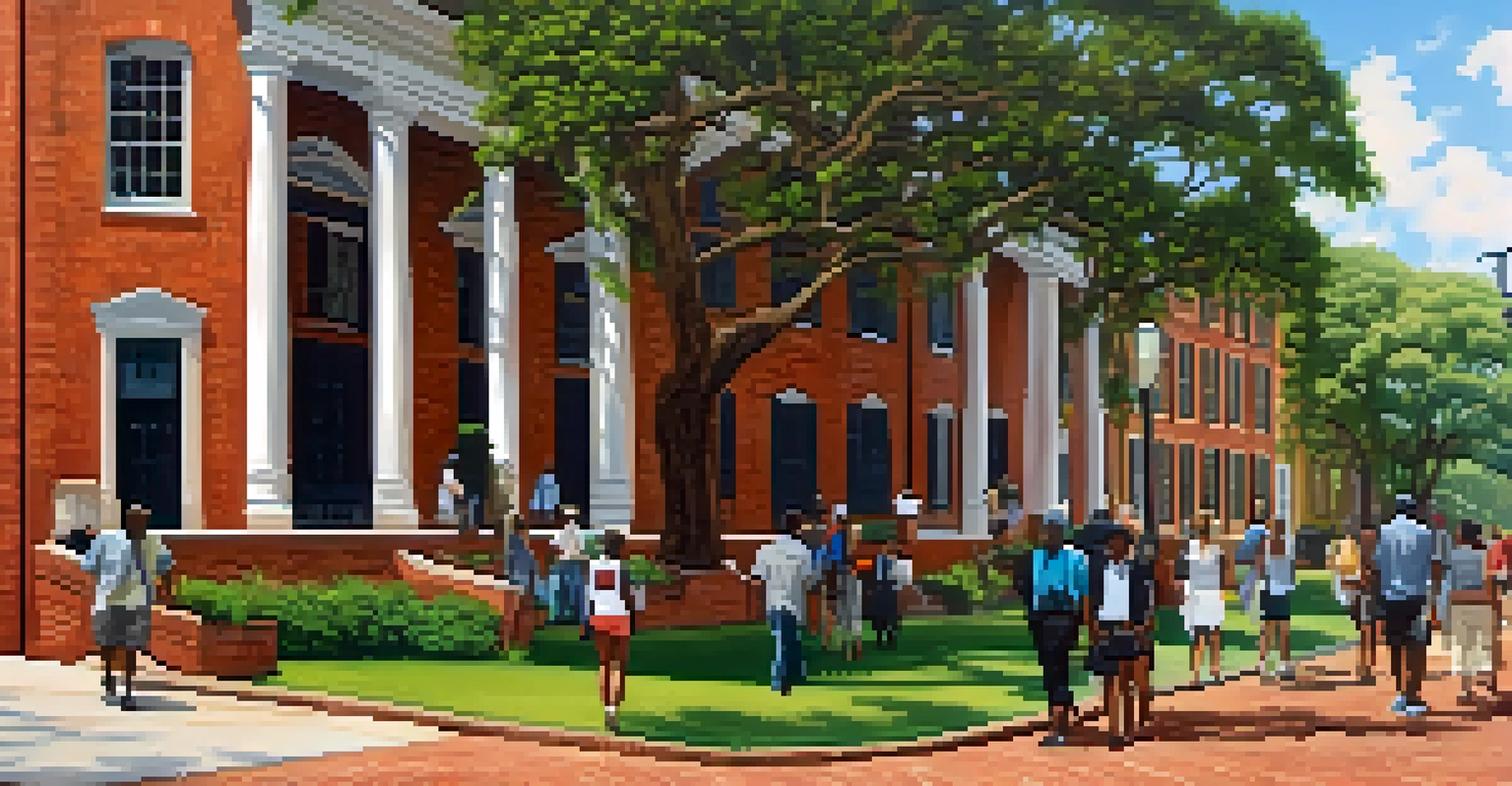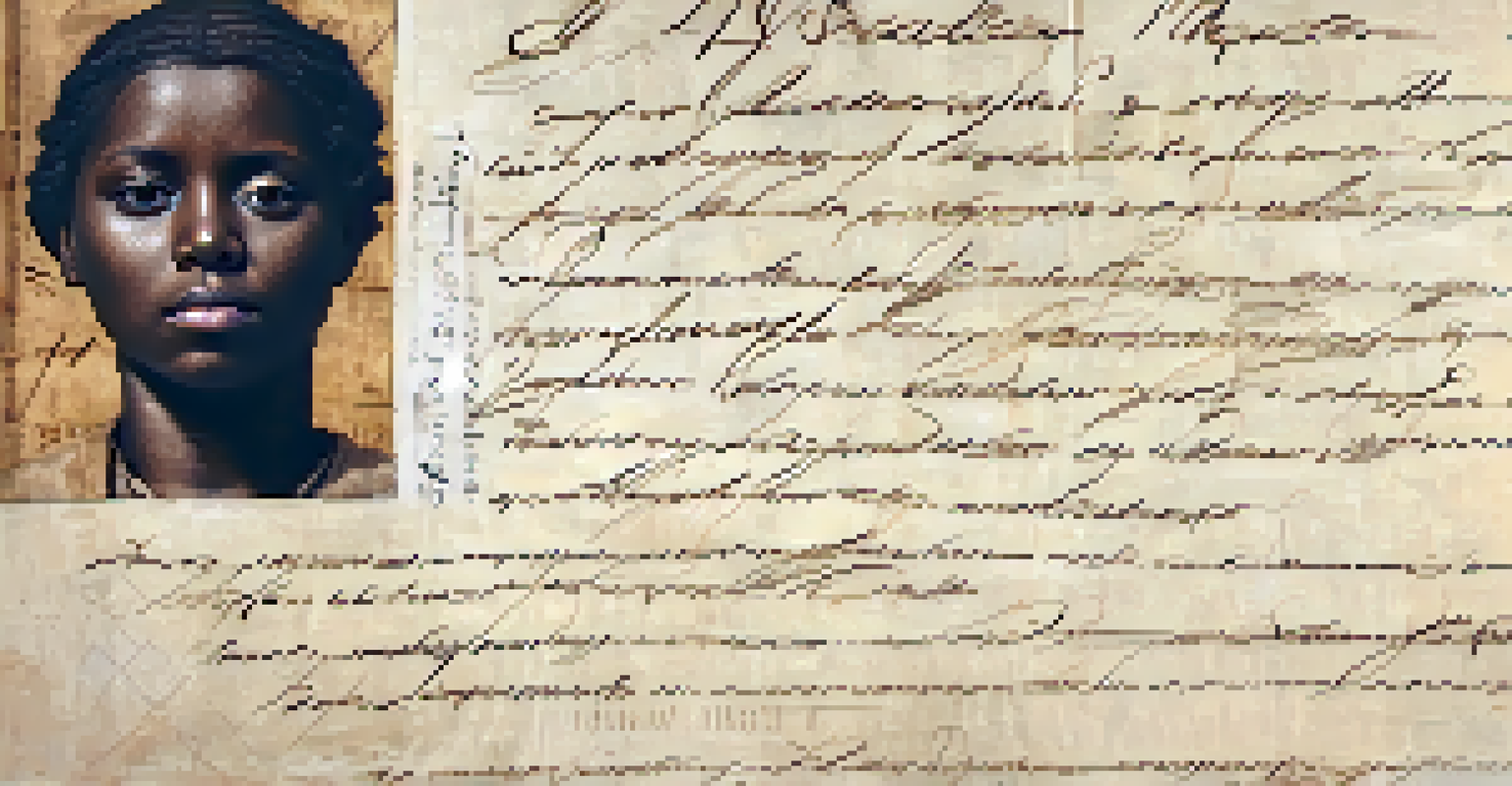The Old Slave Mart Museum: Remembering the Past

Understanding the Old Slave Mart Museum's Historical Context
The Old Slave Mart Museum is located in Charleston, South Carolina, a city that played a pivotal role in the transatlantic slave trade. Established in an original slave auction house, the museum provides a stark reminder of the harsh realities faced by enslaved people. Here, visitors can engage with the history that shaped not only the region but the entire nation.
Those who cannot remember the past are condemned to repeat it.
The museum stands as a testament to a dark chapter in American history, highlighting the inhumanity of slavery and the resilience of those who endured it. It’s essential to acknowledge this past, as it informs our understanding of the present and future. By preserving this history, the museum fosters conversations about race, identity, and justice.
Visitors can expect to see a range of exhibits, artifacts, and multimedia presentations that bring historical narratives to life. The museum’s mission is not only to educate but also to commemorate the lives of those who were sold into slavery. This commitment to remembrance is what sets the Old Slave Mart apart as a significant historical site.
Exploring the Exhibits: What to Expect
As you step inside the museum, you'll be greeted by exhibits that detail the experiences of enslaved Africans. The displays include documents, personal stories, and remnants of the slave trade that help paint a vivid picture of the past. Each exhibit invites visitors to reflect on the human cost of slavery and the impact it has had on generations.

One of the most powerful aspects of the museum is its focus on personal stories. By sharing individual narratives, the museum humanizes the historical figures often lost in broad statistics. These stories serve as a poignant reminder of the dignity and strength of those who lived through such harrowing circumstances.
Museum Highlights Slavery's Impact
The Old Slave Mart Museum offers a poignant exploration of the history and legacy of slavery, fostering critical conversations about race and justice.
Interactive elements also enhance the visitor experience, allowing you to engage with the material in a meaningful way. Whether it's through listening to oral histories or engaging with artistic representations of the struggles faced by enslaved people, each exhibit is designed to provoke thought and encourage empathy.
The Importance of Education and Awareness
The Old Slave Mart Museum plays a vital role in educating the public about the history of slavery in America. It offers educational programs and resources for schools, community groups, and individuals, emphasizing the need for ongoing dialogue about race and equality. By fostering awareness, the museum aims to challenge misconceptions and promote understanding.
Injustice anywhere is a threat to justice everywhere.
Visitors often leave with a deeper appreciation of the complexities surrounding the institution of slavery. This understanding is crucial for addressing the lingering effects of racism and inequality in society today. The museum encourages reflection on how history continues to shape contemporary issues.
In a world where history can sometimes be overlooked or sanitized, the Old Slave Mart Museum stands firm in its commitment to truth. It serves as a reminder that understanding our past is essential for creating a better future, fostering empathy and unity among diverse communities.
Community Engagement and Events
The Old Slave Mart Museum is more than just a place of learning; it’s also a hub for community engagement. The museum frequently hosts events, workshops, and discussions that invite the public to participate in meaningful conversations about history and its relevance today. These initiatives help build a sense of community and promote collective healing.
Special events, like commemorative gatherings and lectures, provide opportunities for individuals to connect with one another and share their experiences. This engagement is vital for fostering understanding and solidarity among different generations and backgrounds. The museum encourages everyone to become active participants in addressing historical injustices.
Engaging Exhibits Foster Reflection
With personal stories and interactive displays, the museum encourages visitors to reflect on the human cost of slavery and its ongoing effects.
By bringing people together, the Old Slave Mart Museum cultivates a space for dialogue and reflection. Such interactions not only enhance the visitor experience but also create lasting bonds within the community, reinforcing the importance of collective memory in shaping our identities.
Visiting the Museum: Practical Information
Planning a visit to the Old Slave Mart Museum is an enriching experience that requires some preparation. Located in the heart of Charleston, the museum is easily accessible for both locals and tourists alike. It’s advisable to check the museum’s website for current hours, admission fees, and any special events that may be taking place during your visit.
The museum offers guided tours as well as self-guided options, allowing visitors to choose the experience that best suits their interests. Engaging with knowledgeable staff can significantly enhance your understanding of the exhibits, as they provide valuable insights and answer questions. Don't hesitate to ask for recommendations on which exhibits to prioritize!
Moreover, the museum is committed to making the experience welcoming for all. Accessibility options are available, ensuring that everyone can engage with the exhibits and learn from the rich history presented. Whether you’re a history buff or just curious, the Old Slave Mart Museum is an experience that's sure to resonate.
Reflecting on the Legacy of Slavery
The legacy of slavery is a heavy burden that continues to affect society today. The Old Slave Mart Museum encourages visitors to reflect on this legacy and consider its implications for contemporary issues such as racism, inequality, and social justice. By engaging with the past, we can better understand the present and work towards a more equitable future.
Reflection is an ongoing process, and museums like the Old Slave Mart play a crucial role in facilitating this journey. They provide a space for individuals to confront uncomfortable truths and engage in discussions that may not occur elsewhere. This process of reflection is essential for healing both individual and collective wounds.
Community Events Promote Healing
Through workshops and discussions, the museum serves as a hub for community engagement, promoting understanding and solidarity among diverse groups.
Ultimately, acknowledging the legacy of slavery is a step towards reconciliation and understanding. The museum serves as a constant reminder of the importance of remembering our history, urging us not to forget the lessons learned from past injustices. By doing so, we can strive to create a more inclusive and compassionate society.
A Call to Action: Engage with History
Visiting the Old Slave Mart Museum is just the beginning of engaging with history. The museum encourages visitors to take what they learn and share it with others. By discussing the themes of slavery and its impact, we can foster greater awareness and understanding in our communities. Remember, history is not just something we read about; it’s a living narrative that shapes our lives today.
There are many ways to continue this engagement beyond your visit. Reading books, attending lectures, or participating in community events can deepen your understanding of these important issues. Many organizations work tirelessly to promote social justice and equality, and they appreciate the support of informed advocates.

Ultimately, the Old Slave Mart Museum serves as a catalyst for change, inviting us all to reflect, engage, and act. By embracing this call to action, we can honor the past while working towards a more just future for all.